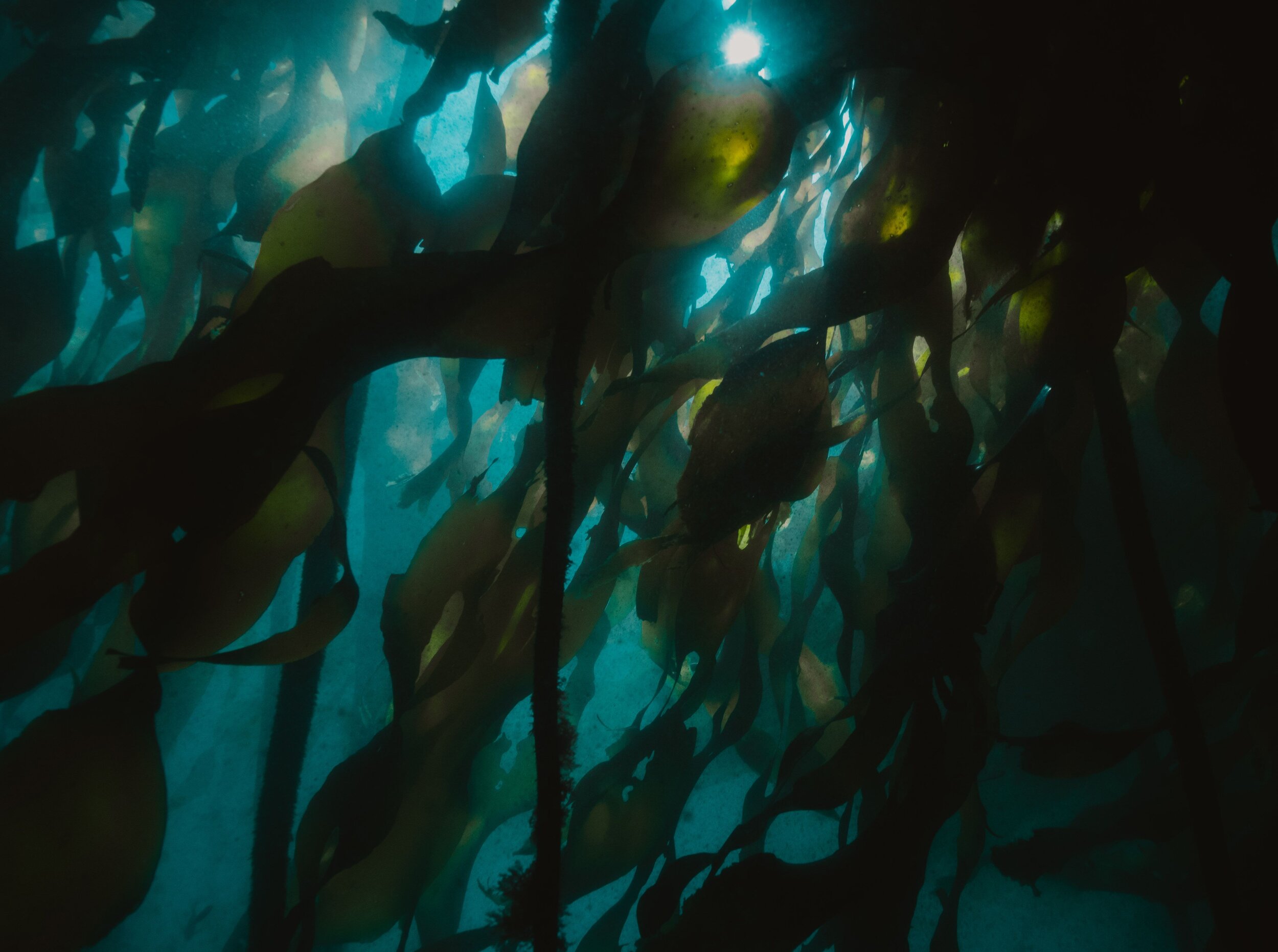Kelp Forests Beneath the Sea: A Vital Habitat
Madison Churchill
Kelp forests are biodiversity hot-spots. These marine macro-algae grow very quickly and create dense underwater habitat structures. Many different marine species interact with kelp forests in one way or another, and these spaces are great connectors which create opportunity for prey and predator alike. Fish, mammals, and invertebrates cohabitate in these underwater forests, which can be found in great numbers in the Pacific Ocean, up the coast from Mexico to Alaska. These incredibly dynamic ecosystems provide food and protection to marine species, but they also help protect humans too, through their ability to produce oxygen and sequester carbon.
Bull kelp off Washington State. Photo: Hannah Gabrielson
Acting like trees in a forest, kelp grows tall and can provide shelter to many different species. Fish seek shelter in kelp, either in schools or alone. Sea urchins feed on it, which can be beneficial as long as the population stays in check. Urchins draw sea stars, otters, and other urchin-eating species. Each new prey that moves into the kelp forest draws more predators. This biodiversity helps to create a balanced and productive ecosystem. Bigger predators like seals and sea lions can often be found around kelp forests because there is ample opportunity for food, and because it creates a safe shelter to raise their young.
Kelp creates a complex habitat for marine life. Photo: Hannah Gabrielson
Not only does kelp help to nourish marine animals, but it can be very beneficial for surrounding forests on land as well. When kelp is composted, it is a powerful soil rebuilder. All of its nutrients leech back into the dirt, providing essential nutrients for plants. This can be very important for agriculture, as it becomes harder and harder for our overworked soil to rebuild itself. Forests bordering kelp habitat are often lush and teeming with life, creating a web of biodiversity in and out of the water.
Like their forest counterparts, kelp forests can sequester large quantities of carbon, a potent greenhouse gas. Densely grown kelp forests are said to be even more productive at removing carbon from the atmosphere than trees. This is a powerful tool in the fight against climate change. Like forests on land, kelp forests are massive regulatory bodies that help to keep everything in balance. It’s thought that by protecting kelp forests, we can slow the impacts from climate change.
Salmon in a traditional Lummi Tribe reef-net. Photo: Hannah Gabrielson
Throughout history, kelp forests have held immense cultural significance to Indigenous communities. In the Pacific Northwest, the Salish Peoples have had, and continue to have, strong connections to kelp. These biodiversity hotspots help to provide food to many coastal communities, and serve as a connection between land and ocean. The kelp itself can be eaten or used in ceremony, as well as the wildlife it attracts. Some methods of fishing, including the reef net method, were used by the Lummi, Samish, and Salish Straits tribes. This method takes advantage of dense kelp forests, and is navigable around rocky outcroppings. It is a very sustainable form of fishing, and is far less damaging to kelp forests than other methods.
Kelp forests have sustained marine life for millions of years since their estimated introduction in the Miocene. These ecosystems have immeasurable benefits in the fight against climate change, and continue to provide food to humans and animals alike. Protection of these vital ecosystems is crucial to the health and longevity of our oceans.
A diver surrounded by kelp. Photo: Hannah Gabrielson
IF YOU’VE ENJOYED READING THIS ARTICLE FROM MADISON CHURCHILL, FOLLOW HER HERE @CHADISONMURCHILL AND LOOK OUT FOR MORE BLOG POSTS.
PHOTOS PROVIDED BY HANNAH GABRIELSON. FOLLOW HER HERE @HANNAH_GABRIELSON.
Want to write for us? Check out our ‘Get Involved’ section.




